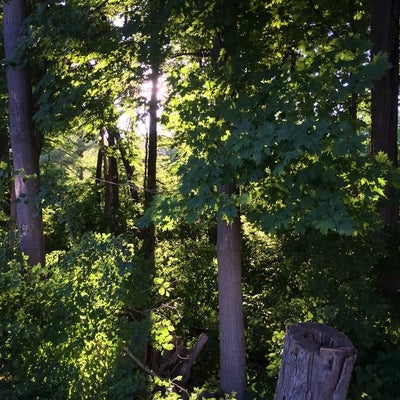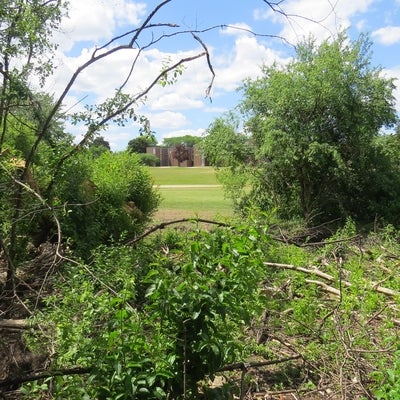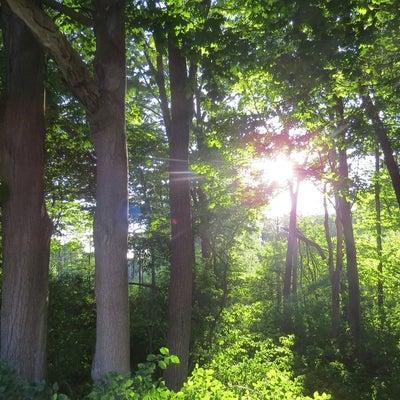At 5 hectares, the UW Urban Forest - located between the Village, Health Services and Westmount Road North - is the largest remaining wooded green space on campus. It is characterized by habitats ranging from the creek bed of Laurel Creek to marshy floodplains, and a moist forest composed of various Great-Lakes-St. Lawrence forest tree species (e.g. white oak and black cherry). Since the creation of the University of Waterloo Urban Woodlot project, many studies have taken place. The woodlot contains over 150 monitoring plots to conduct research.
The goal of this program is to:
- Provide relevant, experiential learning activities for students
- Provide undergraduate and graduate research opportunities
- Inspire the community of University of Waterloo through local, grass-roots activities
- Showcase teaching and research to UW community
- Connect with local community beyond campus
- Contribute to mental health and well being.
Monitoring projects include:
- Annual bird surveys with rare sightings that included the Prothonotary Warbler and Wild Turkey
- Tree mapping of approximately 1,500 trees and 25 unique species, where measurements include tagging, location, size, and health
- Mapping of all Rhamnus cathartica (European Buckthorn) in the woodlot
- Mapping of all invasive herbaceous plants including Alliaria petiolata (garlic mustard), Dipsacus fullonum (teasel), and Arctium Lappa (burdock)
- Monitoring of weather (dataloggers) and snow depths throughout winter months
Community engagement:
Students have embraced this urban forest and over 30 volunteers have helped to tag trees, identify plants, take weather and snow measurements, and remove invasive plants. Students have also contributed to research through course field activities and our outreach enrichment programs.
University of Waterloo Healing Forest
The University of Waterloo's urban forest has been recognized as a national healing forest by the David Suzuki Foundation and the National Healing Forests Initiative. The University of Waterloo’s Healing Forest includes the UW Urban Forest and a parcel of land on the Environmental Reserve, creating spaces for restoration, learning, and reconciliation. The Urban Forest serves as an outdoor lab for addressing invasive species and restoring Indigenous plant relatives, while the Environmental Reserve hosts facilities like a sweat lodge and medicine garden. As the first Healing Forest in the Waterloo Region, it reflects the University’s commitment to reconciliation. Learn more about the Healing Forest.





